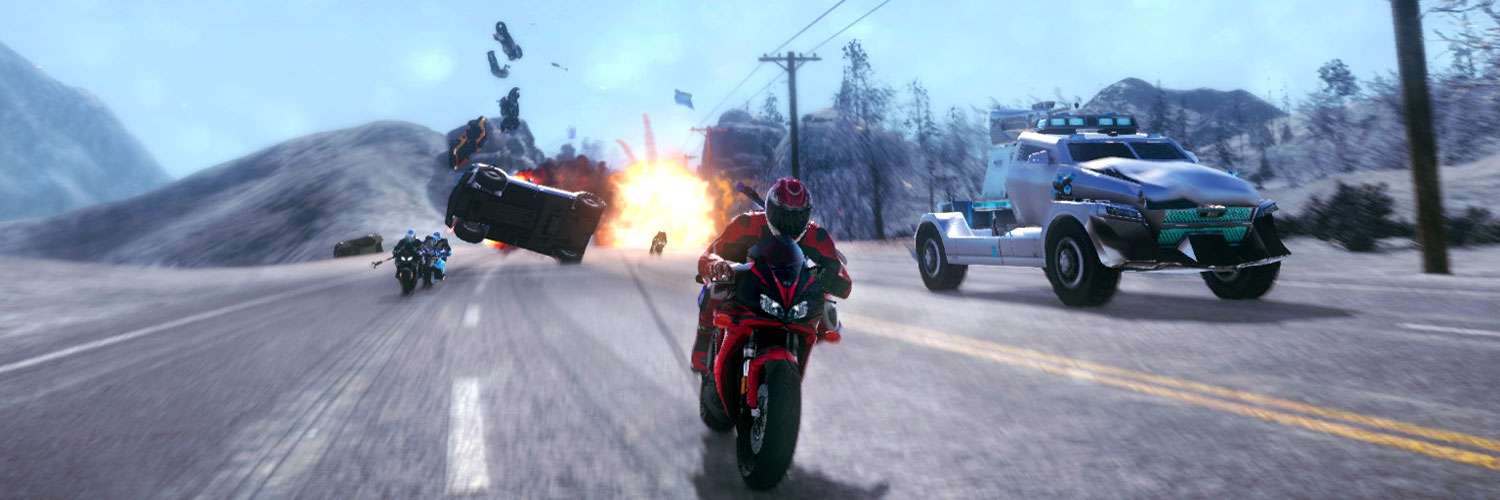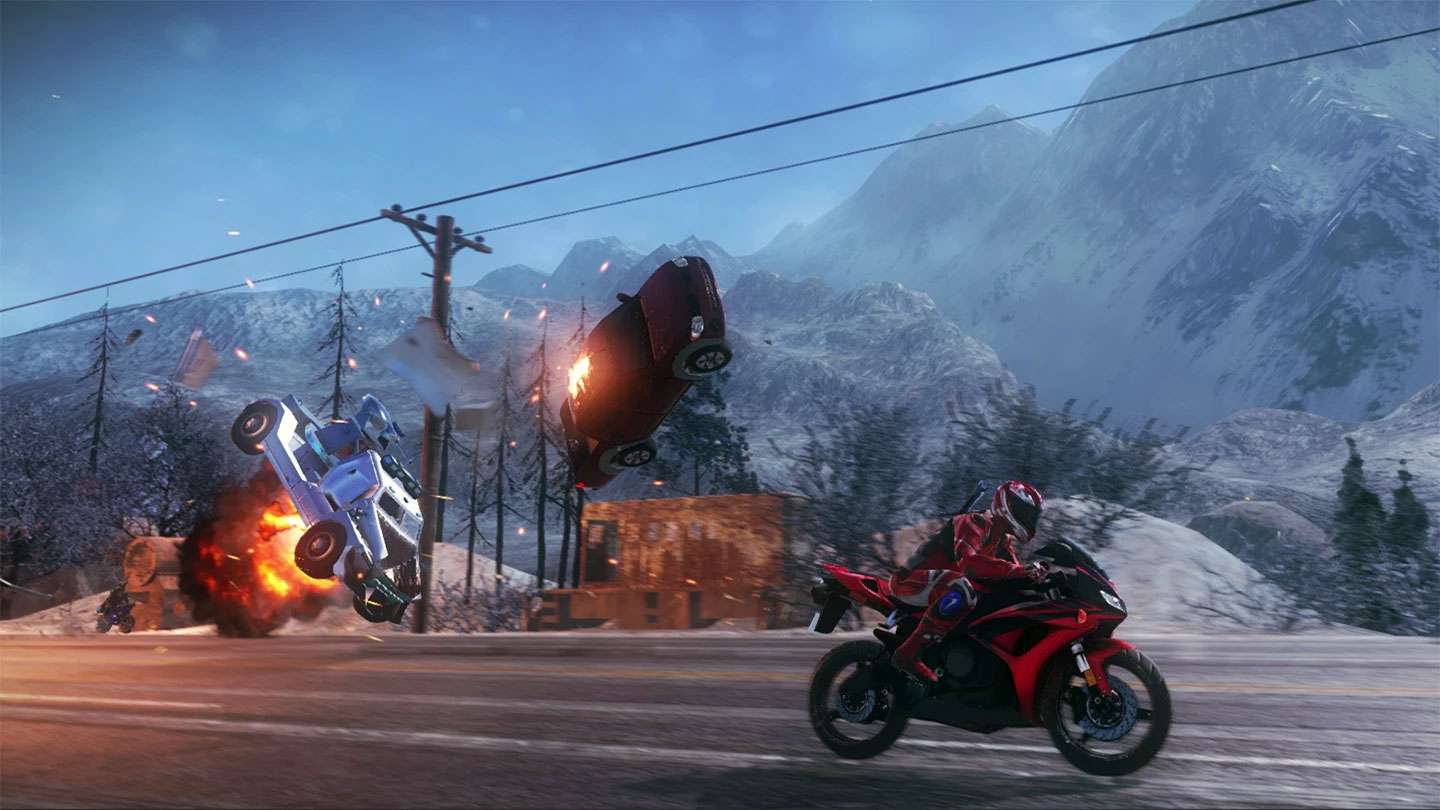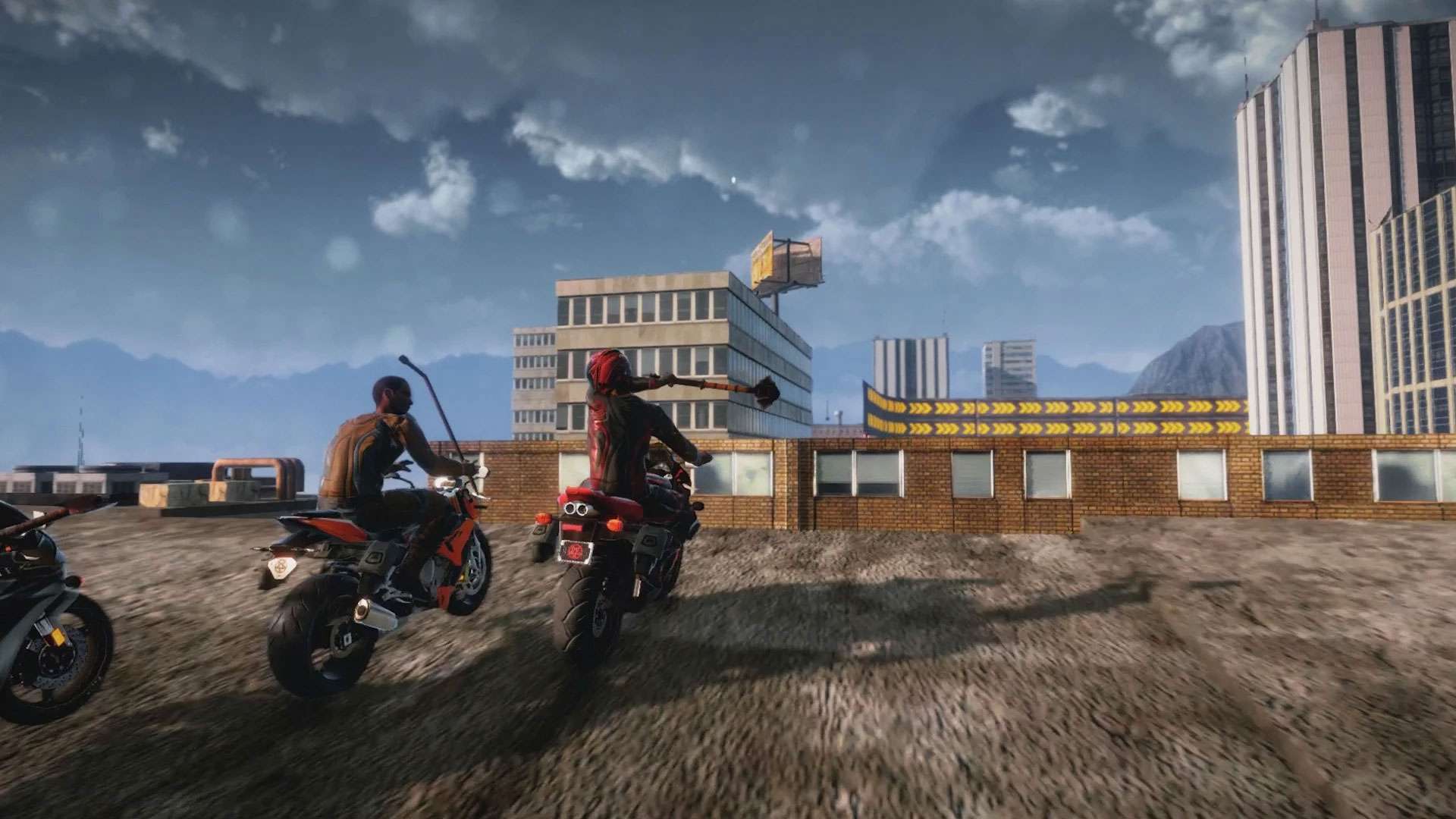
Road Redemption PC Review
The Road Rash series, which hasn’t had a proper entry since the year 2000, was something of a misfit in the world of racing games. Though titles in the series varied, the focus was often more about beating the crap out your racing opponents, rather than deftfully outmaneuvering them on the track, and its quirky nature might explain why we haven’t had a new Road Rash for so long. That’s especially sad for a core set of gamers who grew up in the 90’s, including myself, who have longed for a new Road Rash game for the better part of two decades. In 2013, the team at Pixeldash Studios and EQ Games kickstarted a self-proclaimed “spiritual successor” to the franchise, which raised my hope and skepticism in equal measure. Could an upstart indie team fill the very big shoes left by EA’s long-abandoned series? After playing Road Redemption for the better part of the week, I can confidently say it can, and then some. With the exception of a few issues concerning presentation and collision detection, Road Redemption absolutely knocks it out of the park. Its surprisingly strategic gameplay and incredibly addictive combat system makes for one of the most fun gaming experience I’ve had in the last several years.

While Road Redemption has multiple game modes, including 4-player splitscreen and online vs, its focus is primarily on its single-player campaign, which is a joy to play from beginning to end. Though this mode technically has a story, the game developers seemingly knew that Road Rash fans aren’t looking for a particularly deep plot or long-winded cutscenes. Virtually all dialogue is presented as little recorded snippets that’s shouted at you by the game’s energetic heroes and villains while you’re zooming down the road. The best thing I can say about the campaign’s story is that it gets the hell out of the way, letting you experience the fast and furious gameplay uninterrupted.
The campaign’s structure is setup as a linear string of a dozen or so missions with varying objectives. One mission’s objective might be to race a gang of bikers across a series of rooftops, while another might task you with planting C4 explosives on a caravan of enemy vehicles before they get away. The variety of different tasks is thorough enough that I never got bored. To increase variety further, sometimes a mission will take place in a “hallucinogenic zone”, where cars literally drop from the sky and tumble across the road. It’s as crazy and exhilarating as it sounds. What games like Uncharted feature as scripted sequences, Road Redemption presents organically.
It’s fortunate that Road Redemption’s missions are so much fun, because you’ll be playing a lot of them. Taking a departure from the Road Rash series that inspired it, Road Redemption is a rogue-like (road like?), meaning that when you die, you have to start all the way back at level one. However, since the missions are procedurally-generated, you’re unlikely to experience the same thing twice. There’s also a strong feeling of progression as with every death, you can spend the experience you earned on permanent upgrades. This addictive loop of getting as far as I could, dying, and then becoming slightly more capable for my next run, kept me engaged for the full 6-8 hour campaign.

While Road Redemption’s missions may be varied, the thing they share in common is a focus on combat and destruction, and I’m happy to say that Road Redemption’s combat far exceeds its Road Rash inspiration in both breadth and depth. At any point, your weapon loadout might consist of holding multiple clubs, swords, bombs, and guns, all available at the quick push of a direction on the dpad. As if those weren’t enough options, you can also kick opponents off of cliffs or, (my favorite) grab them in a hold and guide them into the path of an oncoming vehicle. While so many options for dispatching foes might seem overwhelming, each one serves an important role, since different enemy types have vulnerabilities to certain weapons. Some of my favorite Road Redemption moments involved knocking off an enemy biker’s helmet with a sledge hammer, then switching to a katana for the decapitation. You’re rewarded with health and speed bonuses for taking out opponents, so it’s almost always more advantageous to engage in combat than avoid it.
Despite Road Redemption’s incredible fun factor, there were a few moments when Road Redemption shows its low budget roots. There were multiple times when I found myself getting stuck on obstacles or under structures in the environment due to dodgy collisions with some of the structures. Fortunately, this only becomes an issue if you careen off the road, but getting stuck on an object due to dodgy code can feel like an added punishment for screwing up. It seems the game designers may have been aware of this, as you can instantly recenter yourself on the track with a press of a button, so it didn’t significantly detract from my experience.

Another weak spot is Road Redemption’s graphical presentation, which I’d describe as “serviceable” at best. Perhaps it’s due to the procedurally generated environments, but Road Redemption looks like an early Xbox 360 game, with bland and generic landscapes and barebones characters. Ultimately though, when you’re trying to focus on the dozens of enemies, out of control pedestrian vehicles, and pipe-bomb dropping bikers in front of you, you don’t really have much time to focus on the lackluster scenery. The aural experience somewhat makes up for the dated graphics, with a rocking heavy metal soundtrack and satisfying thuds and grunts that properly punctuate the brutal takedowns.
Overall, Road Redemption is a brilliantly fun spiritual successor to the Road Rash series, and absolutely exceeded my expectations. Its exhilarating, and surprisingly tactical gameplay compensate for lackluster visuals and a few environmental collision issues. Road Redemption is an absolute blast to play, and I thoroughly recommend it.
